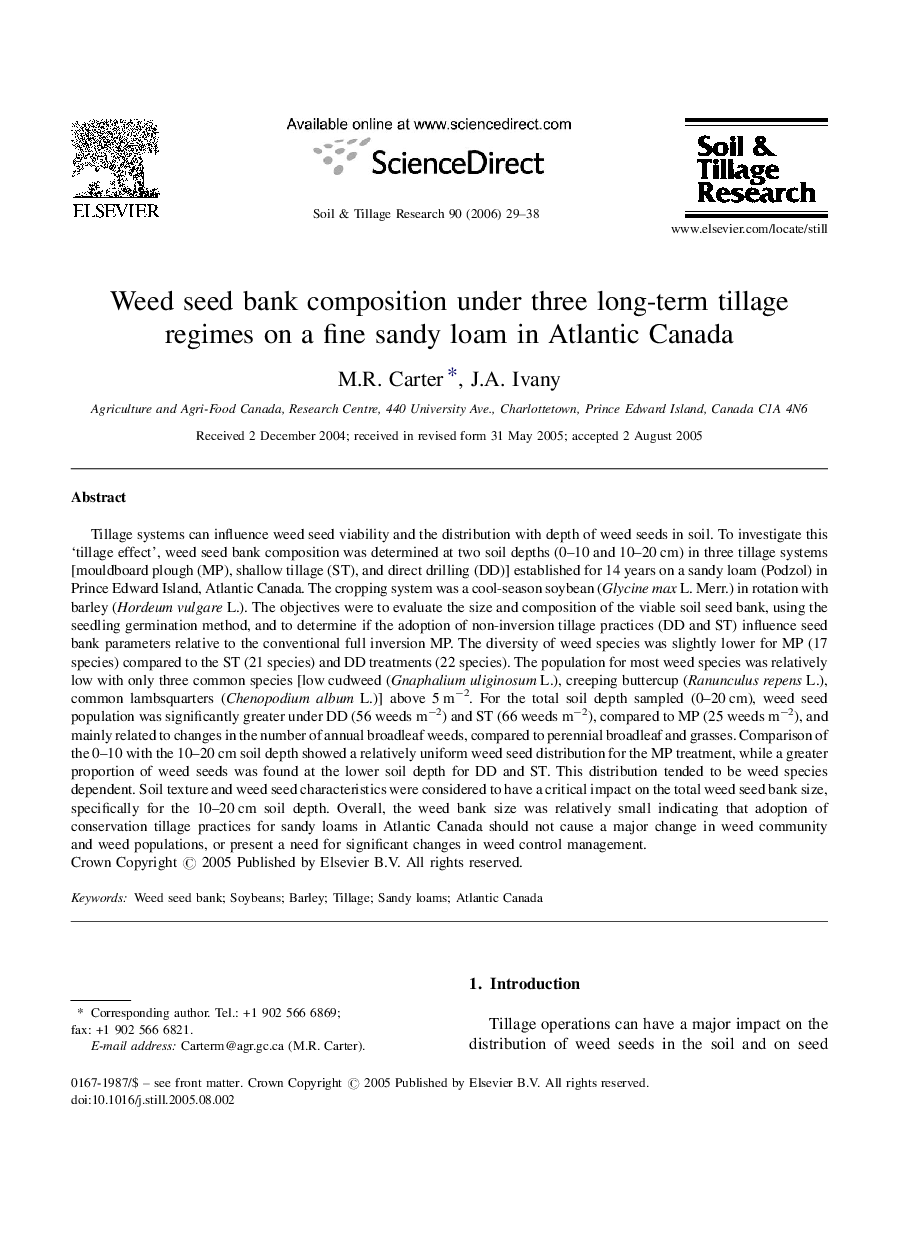| Article ID | Journal | Published Year | Pages | File Type |
|---|---|---|---|---|
| 306812 | Soil and Tillage Research | 2006 | 10 Pages |
Tillage systems can influence weed seed viability and the distribution with depth of weed seeds in soil. To investigate this ‘tillage effect’, weed seed bank composition was determined at two soil depths (0–10 and 10–20 cm) in three tillage systems [mouldboard plough (MP), shallow tillage (ST), and direct drilling (DD)] established for 14 years on a sandy loam (Podzol) in Prince Edward Island, Atlantic Canada. The cropping system was a cool-season soybean (Glycine max L. Merr.) in rotation with barley (Hordeum vulgare L.). The objectives were to evaluate the size and composition of the viable soil seed bank, using the seedling germination method, and to determine if the adoption of non-inversion tillage practices (DD and ST) influence seed bank parameters relative to the conventional full inversion MP. The diversity of weed species was slightly lower for MP (17 species) compared to the ST (21 species) and DD treatments (22 species). The population for most weed species was relatively low with only three common species [low cudweed (Gnaphalium uliginosum L.), creeping buttercup (Ranunculus repens L.), common lambsquarters (Chenopodium album L.)] above 5 m−2. For the total soil depth sampled (0–20 cm), weed seed population was significantly greater under DD (56 weeds m−2) and ST (66 weeds m−2), compared to MP (25 weeds m−2), and mainly related to changes in the number of annual broadleaf weeds, compared to perennial broadleaf and grasses. Comparison of the 0–10 with the 10–20 cm soil depth showed a relatively uniform weed seed distribution for the MP treatment, while a greater proportion of weed seeds was found at the lower soil depth for DD and ST. This distribution tended to be weed species dependent. Soil texture and weed seed characteristics were considered to have a critical impact on the total weed seed bank size, specifically for the 10–20 cm soil depth. Overall, the weed bank size was relatively small indicating that adoption of conservation tillage practices for sandy loams in Atlantic Canada should not cause a major change in weed community and weed populations, or present a need for significant changes in weed control management.
